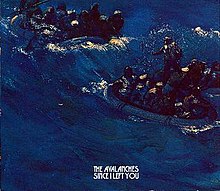You are awake. Your room is small and unfamiliar; walls of
stone. The ground is cold and wet. Where is the door? Crawling on your hands and knees, feeling for
anything you understand. Brushing along
the wall which reeks of mold when finally, something wooden. A door?
A doorknob, yes! This is the way
out. As your fingers grasp the knob, you
recoil in pain. It burns like ice, and
is frozen in place. Covering your hand
with your shirt, you are able to break the knob loose and open the door which
can’t have weighed less than five hundred pounds. This burdensome task, and on the other side,
darkness. A glimpse of light can be seen
at the end of a corridor. Making your
way along the hall, the smells grow worse.
From mold to spoiled meat.
You’ve
reached the light, and to your right is a second hallway, but it appears as if
you are no longer alone. A figure skulks
along the way coming in your direction.
Torches line this hallway, and shine light all around the figure, but
this light does not dare touch him. He
is a silhouette. Convincing yourself
that the conditions can be no worse, you brave this haunting shadow with a
mighty stride. As you approach him,
still his character becomes no more clear to you. Closer, closer, until you are not but ten feet
away. You break and stumble, yet you are
not acknowledged. Stunned. You are paralyzed, for at this distance with
all of this light, he has taken on more characteristics of a shadow, not less. Amorphous and blurry, the figure draws
closer. Through you, he passes. Your eyes burn. You try to call for help, but nothing comes
out. Asleep.
Awake
once more, upon an altar to which you are bound. Struggling to break free, its hold grows
tighter. These are neither chains nor
rope holding you down. As your eyes grow
accustomed to the light, you grow confused.
This is a material, with which you are unfamiliar. It is similar in color to bruised flesh, but
cold as steel and rough like driftwood.
In the corner of the room stands a man.
You know this time that he is a man, for his features are such. This man has fur like an animal. He begins to approach and his footsteps sound
like something you know, but it is not the sound that a man makes as he
walks. He has hooves. And as he comes to the light of the torches
surrounding all four corners of the altar, you can see two mangled horns atop
his head. Standing over you, without a
word, he rears his head and comes down with his horns toward your chest. Asleep.
Lustmord
is a dark ambient recording artist who captures the sounds of crypts, caves,
and slaughterhouses; literally. Using
his field recordings, he produces the greatest Halloween soundtrack you can
find. I have described what I imagine
when I listen to Lustmord, and with music of his genre, that’s the best I can
do. If you are patient and are a fan of
dark ambient music, you will not be disappointed.







